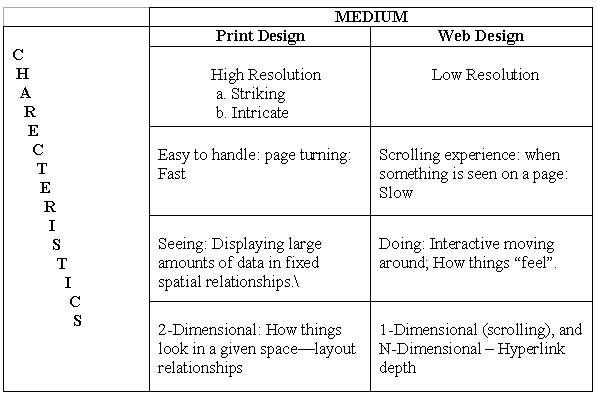Print Design vs. Web Design: Standards of Excellence?
Project III
Project IV
Project V
Assignment III
Assignment IV
Rhetorical Analysis
of Goodwill
You Are What You Eat
Or so proclaimed the 1970’s, at about the same time Marshall McLuhan announced: “We shape our tools and they in turn shape us.”[1]. He was of course talking about the use of media prior to the advent of the World Wide Web, but his insights on media at that time are applicable to Web design and writing.
A "Global Village"
McLuhan, of course, is famous for coining the phrase "Global Village", and saw a potential for electronic media to both unify and retribalize the human race -- two concepts certainly in apposition, and possibly in opposition. For any media, and certainly for the Web, to serve a global syncretic function, depends on whether or not "standards" of use for that medium are developed and universally adopted. Therefore an important question is: Exactly what is a standard?
Standards of Excellence
Jakob Nielsen, in his Web based Alertbox (January 24, 1999), discusses the difference between the characteristics of print design (though “print" to him seems pretty much exclusively newspapers) and those for good Web design [2]. The table below summarizes these differences:

Are these “Standards” of “Excellence”?
But really, aren’t these just rules – design rules, if you will – and not quite up to the task of being criterion or yardsticks or touchstones of “excellence.” When we think of “standards of excellence” shouldn’t qualities such as truth, honesty, integrity, and thoroughness come to mind, and aren’t those "standards" applicable to all media regardless of the rules for design and the mechanics of writing?
Perhaps Web site development is yet to grasp the relevance of rather immutable "standards of excellence", and faces the danger of realizing McLuhan’s insight: allowing our tools to completely shape us. For it was McLuhan who, in his hyperbolic later years, also proclaimed the electronic media to be “an unholy imposter…a blatant manifestation of the Anti-Christ” [3] .
[1] www.regent.edu/acad/schcom/rojc/mdic/mcluhan.html
[2] www.useit.com/alertbox/990124.html
[3] www.regent.edu/acad/schcom/rojc/mdic/mcluhan.html
